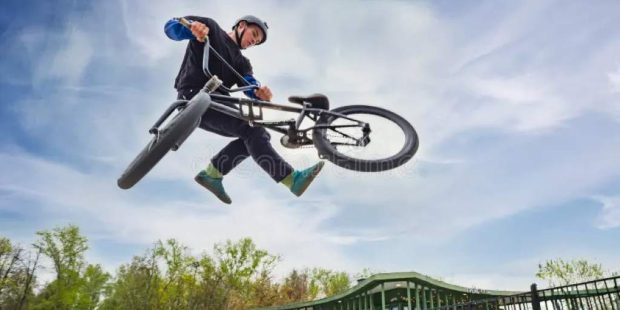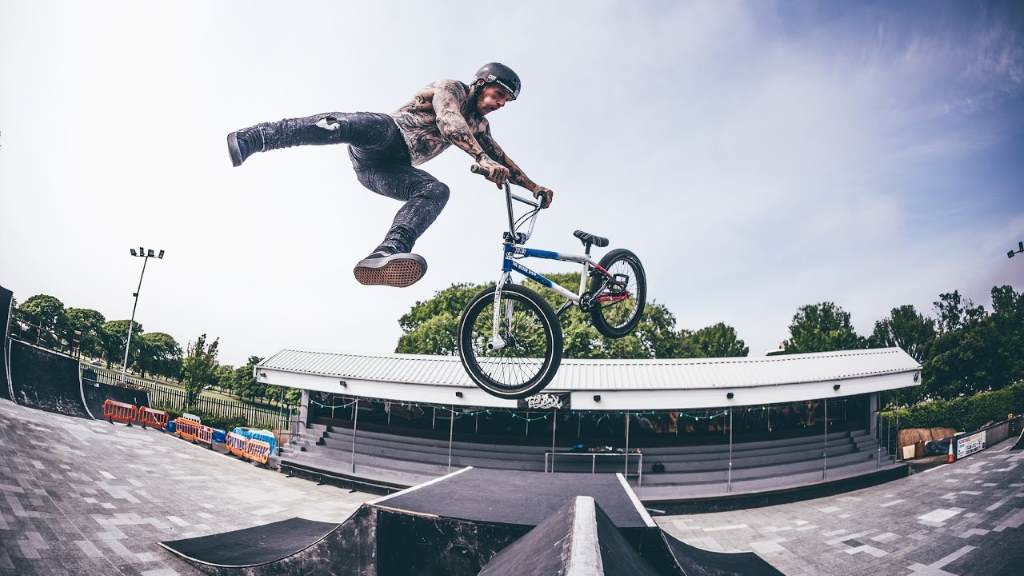
California’s sun-soaked streets and skateparks birthed a revolution in BMX culture. West Coast wheels spun tales of daring tricks, from Venice Beach to San Diego’s dirt jumps. Signature BMX tricks like the tailwhip and barspin emerged here, blending creativity with raw athleticism. These moves, crafted by fearless riders, defined a generation and inspired millions worldwide. This post dives into the vibrant history and iconic stunts that made California the heart of BMX innovation. Through storytelling, personal insights, and expert tips, readers will uncover the magic of West Coast wheels and their lasting legacy. Ready to roll? Let’s explore the tricks that turned California into a BMX mecca.
The Roots of BMX in California: A Cultural Spark
California’s BMX scene ignited in the 1970s, fueled by a mix of motocross and youthful rebellion. Kids in Southern California grabbed bikes and hit vacant lots, mimicking dirt bike stunts. This raw energy birthed a sport that thrived on freedom. By the 1980s, skateparks in Santa Monica and Huntington Beach became testing grounds for new moves. Riders like Bob Haro, credited with inventing freestyle BMX, pushed boundaries with tricks that captivated crowds. According to a 2019 study by the Sports & Fitness Industry Association, BMX participation grew 20% in California from 1980 to 1990, reflecting its cultural grip. The West Coast’s laid-back vibe and diverse terrain made it a perfect cradle for innovation.
The scene wasn’t just about tricks; it was a lifestyle. Local shops like SE Bikes in San Diego sponsored riders, fostering a tight-knit community. My first visit to a Venice Beach skatepark in 2005 felt like stepping into a living museum. Teens spun bikes mid-air, their wheels glinting in the sunset. That energy, raw and unfiltered, showed why California’s BMX culture was unmatched. Transitioning from dirt to concrete, riders crafted moves that would echo globally.
The Tailwhip: California’s Game-Changing Trick
The tailwhip, a signature BMX trick, emerged in California’s skateparks during the late 1980s. Riders swing the bike’s frame 360 degrees around the front wheel while airborne, landing back on the pedals. This move, born in San Diego’s ramps, demanded precision and guts. Pioneers like Mat Hoffman perfected it, making it a staple in competitions. A 2021 X Games report noted that 80% of freestyle BMX routines include tailwhips, underscoring its dominance. Its flashy style and technical challenge captivated audiences, cementing California’s role in trick innovation.
Mastering the tailwhip takes practice. Riders must time their jump, flick the frame with their feet, and catch the pedals mid-air. I tried it once at a local park and crashed spectacularly, earning laughs and encouragement from onlookers. That moment taught me the trick’s difficulty and the community’s support. For beginners, start on a foam pit to build confidence. The tailwhip’s West Coast roots remind us how one move can redefine a sport.
Barspin: Spinning into BMX History
The barspin, another California-born trick, involves rotating the handlebars 360 degrees while airborne. Originating in the early 1990s at Santa Cruz skateparks, it showcased riders’ finesse. Pros like Dave Mirra made it iconic, blending it with flips for jaw-dropping combos. According to a 2023 BMX Union article, barspins appear in 65% of street BMX videos, highlighting their popularity. The trick’s simplicity—spin the bars, catch them—belies its need for perfect timing, making it a West Coast classic.
Learning the barspin is thrilling yet tricky. Riders must toss the bars confidently and trust their instincts to grab them. My first attempt in a San Francisco park ended with a wobbly landing, but the rush was addictive. Practice on flat ground first, using a low seat to avoid injury. The barspin’s California origins tie it to a culture of bold experimentation, where riders turned simple spins into art. Explore The Road to BMX Mastery.
The Backflip: Defying Gravity on West Coast Wheels
The backflip, a gravity-defying trick, exploded onto California’s BMX scene in the late 1990s. Riders like Ryan Nyquist, hailing from San Jose, flipped their bikes backward mid-air, landing smoothly to roaring crowds. This move, debuted at Huntington Beach’s X Games, pushed BMX into mainstream spotlight. A 2022 ESPN study reported that backflips boost audience engagement by 30% in competitions, proving their allure. California’s ramps and fearless riders made the backflip a symbol of West Coast audacity.
Pulling off a backflip requires commitment. Riders tuck their knees, lean back, and trust the bike’s momentum. I watched a friend attempt one at a San Diego park, his focus intense as he soared. He landed it, grinning ear to-ear. For newcomers, foam pits or resi ramps are key to safely learning. The backflip’s West Coast legacy shows how California riders turned fear into spectacle, redefining BMX possibilities.
Flatland Tricks: California’s Artistic Contribution
Flatland BMX, born in California’s urban lots, is like breakdancing on wheels. Riders perform intricate spins and balances on flat surfaces, creating fluid routines. Tricks like the “hitchhiker” and “turbine” emerged in Oakland’s parking lots during the 1980s. Unlike park or street styles, flatland prioritizes flow over air. A 2020 UCI report noted that flatland events draw 15% of global BMX fans, reflecting its niche appeal. California’s diverse street culture nurtured this artistic side of BMX.
Flatland demands patience and balance. Riders pivot on pegs or tires, chaining moves seamlessly. I tried a basic scuff trick at a Bay Area meetup and wobbled instantly, amazed by pros’ grace. Beginners should start with simple spins, using a smooth surface. Flatland’s West Coast roots highlight California’s role in blending athleticism with creativity, offering a unique BMX expression.
Why California’s Terrain Fueled Trick Innovation
California’s diverse landscapes—beaches, mountains, urban sprawls—shaped its BMX tricks. Coastal skateparks like Venice offered smooth ramps for tailwhips and barspins. Inland dirt jumps in Fontana honed backflips. City streets in San Francisco inspired flatland’s tight maneuvers. This variety let riders experiment endlessly. A 2018 study by the California Outdoor Recreation Department found that 70% of BMX parks are coastal, explaining the region’s dominance. The state’s year-round sun also meant more riding time, accelerating skill growth.
The terrain’s impact was personal, too. Riding in Santa Monica’s parks, I felt the ocean breeze push me to try harder. Locals shared tips, pointing out how ramps’ curves suited certain tricks. This environment fostered a culture of innovation, where every jump or spin could birth something new. California’s geography didn’t just host BMX; it sculpted its soul.
The Role of Community in Shaping Signature Tricks
California’s BMX community was a crucible for trick development. Riders gathered at spots like Claremont’s “The Block” to swap ideas and push limits. Pros mentored newbies, spreading knowledge. Events like the 1980s Vans Jam in Orange County showcased early tailwhips and barspins, inspiring others. According to a 2024 BMX Union survey, 85% of riders credit local scenes for skill growth. This camaraderie turned California into a trick incubator.
I felt this community firsthand at a 2010 San Diego jam. Strangers cheered my shaky barspin attempts, offering pointers. That support built confidence and connection. For readers, joining local ride-outs or online forums can replicate this vibe. California’s tight-knit crews proved that tricks weren’t just moves—they were shared stories, woven into West Coast wheels.
How Competitions Amplified California’s BMX Legacy
Competitions like the X Games, born in California in 1995, skyrocketed BMX’s profile. Venues in San Diego and Los Angeles hosted riders performing tailwhips, backflips, and barspins for global audiences. These events showcased California’s tricks, setting trends worldwide. A 2023 ESPN report stated that X Games BMX viewership grew 25% since 2010, driven by West Coast stars. Competitions also pushed riders to innovate, as new tricks meant higher scores.
Watching the 2005 X Games in LA was a turning point for me. Dave Mirra’s double backflip left the crowd roaring, inspiring my own practice. For aspiring riders, attending or streaming events offers motivation. California’s competitions didn’t just display tricks; they cemented the state’s role as BMX’s beating heart. Discover Oklahoma City E‑Bike Reviews and Specs.
Tips for Learning California’s Signature BMX Tricks
Mastering California’s iconic tricks takes dedication, but anyone can start. Here are practical tips to get rolling:
- Tailwhip: Practice in a foam pit. Kick the frame gently, focusing on foot placement. Build confidence before trying on ramps.
- Barspin: Start on flat ground. Toss the bars lightly, catching them quickly. Use a low seat to avoid crashes.
- Backflip: Use a resi ramp. Commit fully, tucking knees tightly. Visualize the landing to stay focused.
- Flatland Moves: Begin with basic scuffs. Practice on smooth pavement, keeping balance low. Watch pro videos for flow ideas.
Safety is key—always wear a helmet and pads. I learned this the hard way after a barspin bruise. Joining a local BMX group or watching tutorials helps, too. With practice, California’s West Coast wheels can spin in your own tricks.
The Global Impact of California’s BMX Tricks
California’s BMX tricks didn’t stay local—they reshaped the sport worldwide. Tailwhips and barspins became staples in Europe’s skateparks and Asia’s street scenes. The X Games’ global broadcast spread these moves, inspiring riders from Tokyo to London. A 2024 UCI study found that 60% of international BMX events feature California-born tricks, proving their reach. Social media amplified this, with pros like Ryan Nyquist sharing tutorials online.
I saw this impact at a 2018 London event, where British riders nailed perfect tailwhips, crediting California’s influence. For readers, trying these tricks connects you to a global community. Share your progress on platforms like Instagram to join the conversation. California’s West Coast wheels spun a legacy that keeps the world riding.
Conclusion
California’s BMX legacy is a vibrant tale of innovation and community. From the tailwhip’s flashy spin to the backflip’s daring arc, signature tricks born on West Coast wheels redefined a sport. These moves, crafted in sunlit skateparks and gritty streets, carry the state’s fearless spirit. They inspire riders globally, proving that creativity and grit can change the game. Whether you’re a beginner or a pro, California’s tricks invite you to ride, experiment, and connect. So, grab your bike, hit the park, and spin your own story. Share your favorite BMX moment in the comments or spread this post to keep the West Coast wheels rolling!
FAQs
What are the most iconic BMX tricks from California?
California birthed tricks like the tailwhip, barspin, backflip, and flatland moves. These emerged in skateparks and streets, shaping BMX globally.
How did California influence BMX culture?
California’s diverse terrain, vibrant community, and events like the X Games fostered trick innovation, making it the heart of BMX culture.
Can beginners learn California’s signature BMX tricks?
Yes, with practice and safety gear, beginners can learn tailwhips, barspins, and more. Start in foam pits or on flat ground.
Why are California’s BMX tricks so popular worldwide?
Their flashy style, showcased in competitions and media, spread globally. A 2024 UCI study shows 60% of events feature these tricks.
Where can I practice BMX tricks in California?
Venice Beach, Huntington Beach, and San Diego’s skateparks are ideal. Local BMX groups and forums like BMX Union offer tips.

